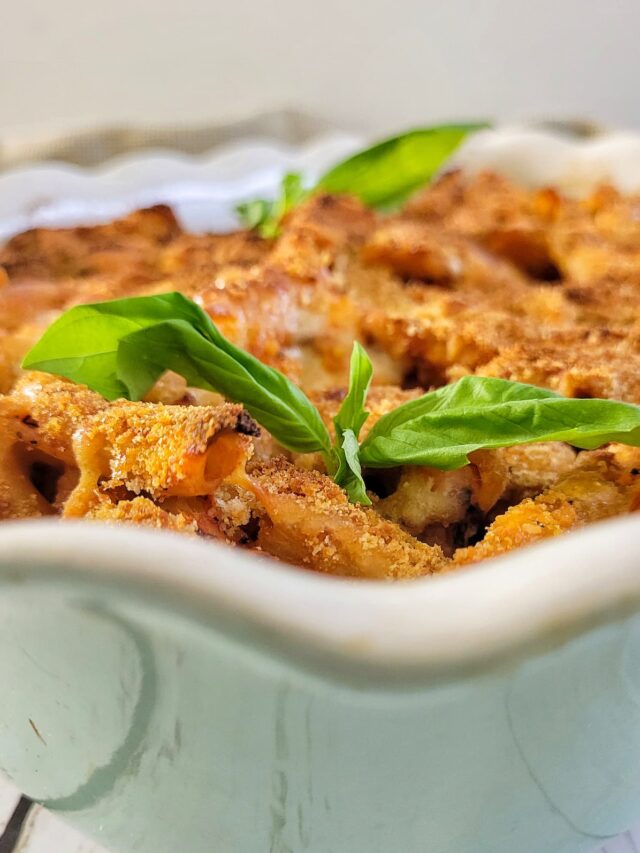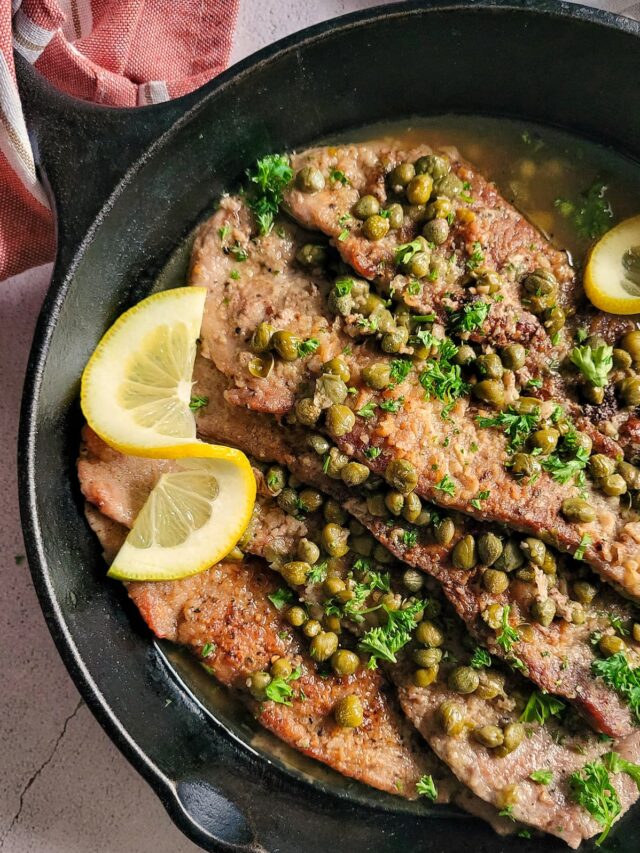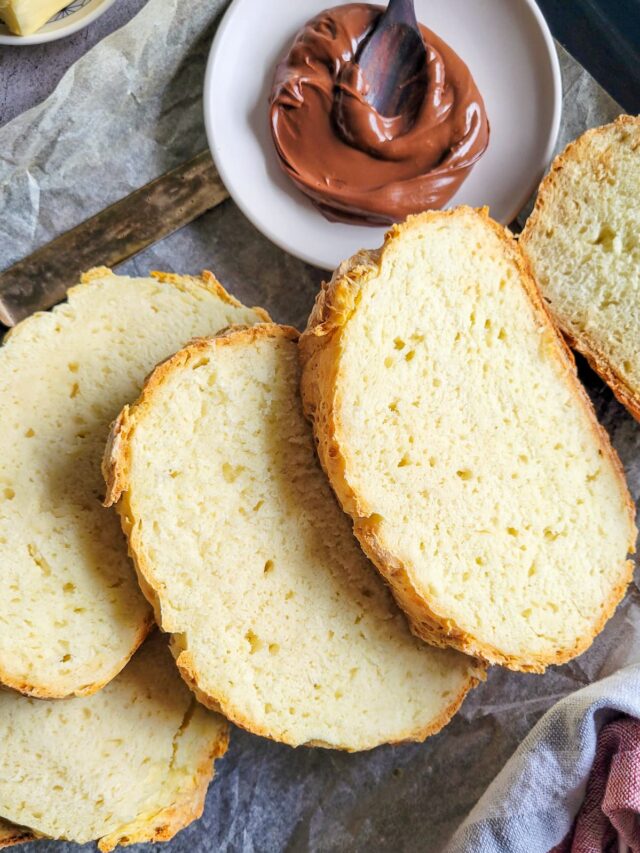To the streets of Thailand we go with this quick and easy to make recipe for Chicken with Thai Basil. This fragrant herb has a unique depth of flavour that transports you straight to the bustling markets of Bangkok!
If you’ve ever been to Thailand then I’m sure you’re most definitely aware of all the good food there is to choose from. From the best pad Thai that won’t cost you more than a few dollars to buy on the streets to the mango sticky rice you’ll likely see on every restaurant menu, Thailand really is a foodie Heaven. With so many different options to choose from, it’s no wonder that Thai food has become a nationwide cuisine loved by people from all over the world. Infact, I still dream about some of the dishes I had on my solo trip to Thailand back in 2015. From the soups, to the rice and noodle dishes, to the delicious array of spicy sauces, I love Thai food and I love making it at home just as much!

FLAVOUR is the name of the game when it comes to Thai cuisine. Whether you’re slurping up every last noodle on your plate, enjoying a refreshing papaya salad or indulging in a curry who’s flavour WILL actually knock your socks off, each dish is carefully crafted with spices and herbs that are packed with such incredible flavour. The good news is that Thai food is quite easy to make at home and making these kinds of recipes will give you a delicious array of ingredients to keep on hand for more delicious dishes in the future. It’s a win-win situation if you ask me.
What’s more? The fact that you don’t even have to hop on a plane (heck, you don’t even have to leave your house!) in order to make this all happen. This Thai Basil Chicken recipe WILL transport you to the streets of Thailand. Annnnd does so in less than 30 minutes. It’s fast, fresh, flavourful and guaranteed to satisfy when those Thai food cravings come a-knockin’.
INGREDIENTS TO MAKE CHICKEN WITH THAI BASIL

If you cook your fair share of Asian food at home, then you likely already have most (if not all) of these ingredients on hand. So, why not use them to create an authentic Thai dish that the whole family is sure to love?! Let’s discuss the exact ingredients you’ll need to throw this thing together in a little bit more detail down below:
- Chicken: Boneless, skinless chicken thighs work best in this recipe. They are more flavourful and juicy compared to chicken breast. They also cook quickly, making them perfect for stir-frying.
- Olive Oil: Used for cooking the chicken and vegetables. Since we’re not cooking the chicken at too high of a temperature, its smoke point allows it to withstand the heat without burning. However, you can use a different oil instead (such as avocado), if you prefer.
- Garlic: Adds aromatic flavour to the dish. It’s minced and sautéed in oil to release its aroma and garlicky flavour into the dish. Therefore, fresh garlic (and not garlic powder) work best in this recipe.
- Shallots: Similar to onions but milder in flavour. They add a sweet and delicate onion flavour to the dish when thinly sliced and cooked. However, if you don’t have any on hand, feel free to use white, yellow, red or green onions in their place.
- Thai Bird’s Eye Chilies: These small but fiery chilies add heat and spice to the dish. Adjust the amount according to your spice preference using more for extra spicy or omitting completely for none at all. PRO TIP: If you want the flavour without the spice, take the seeds out of the chilies before using them in this dish.
- Thai Basil: Different from sweet basil commonly used in Western cuisine, Thai basil has a distinct flavour with hints of licorice and mint. It’s a key ingredient in Thai cuisine and a star ingredient in this dish. It adds an unmistakable freshness and aroma to this Thai basil chicken recipe.
- Oyster Sauce: A savoury and slightly sweet sauce made from oysters, it adds depth of flavour and umami to the dish.
- Soy Sauce: Adds saltiness and a rich, savoury flavour to the dish. It’s a staple ingredient in Asian cooking (and my household!). It also helps add a nice deep brown colour to the chicken.
- Fish Sauce: A pungent and salty sauce made from fermented fish, it adds a distinct umami flavour to the dish.
- Sugar: Balances out the savoury and salty flavours in the dish, adding a touch of sweetness.
- Chicken Broth: Provides additional depth of flavour and helps to create a sauce that coats the chicken and vegetables.
- Rice (for serving): Optional but serves as the perfect base for the flavourful Thai basil chicken. White rice or brown rice both work well depending on your personal preference or dietary needs.

HOW TO MAKE THAI BASIL CHICKEN FROM SCRATCH (KEY TIPS)

You can find full instructions for how to make this flavourful recipe for chicken with Thai basil in the recipe card down below. But here are a few quick tips to keep in mind:
- Prep all of the ingredients before you start cooking. Since stir-frying is a quick cooking method, it’s essential to have all your ingredients prepared and ready to go before you start cooking. This includes slicing the chicken, mincing the garlic, slicing the shallots and chopping the Thai chilies and basil leaves. EXTRA TIP: Make sure you take care to properly slice the chicken uniformly and thinly for best results. This ensures that the chicken cooks quickly and evenly. If the slices are too thick, they may not cook through properly before the other ingredients are done.
- Use fresh Thai basil. While it’s tempting to substitute with other types of basil, using fresh Thai basil is key to achieving authentic flavour. It has a distinct aroma and flavour that complements the dish perfectly.
- Use high heat. Stir-frying is done at high heat to quickly cook the ingredients while maintaining their texture and flavour. Make sure your pan or wok is hot before adding the oil and ingredients.
- Keep stirring. The pan will be a little bit overcrowded as you’re cooking all of the chicken at the same exact time. Continuous stirring will ensure that each piece has the chance to cook evenly and properly on all sides.
- Stir-fry in stages. Start by stir-frying the aromatics like garlic, shallots and Thai chilies first to release their flavours. Then add the chicken and cook until it’s almost done before adding the sauce and basil leaves. This ensures that each ingredient is cooked to perfection without overcooking or undercooking any component of the dish. It also allows the flavours to build layer by layer, resulting in a delicious and well-balanced Thai Basil Chicken dish.
- Adjust seasonings to taste. Taste the dish before serving and adjust the seasonings if necessary. You can add more soy sauce for saltiness, more sugar for sweetness or more Thai chilies for heat, according to your preference.
- Serve immediately. Thai Basil Chicken is best enjoyed hot and fresh. Serve it immediately with white or brown rice for a delicious and satisfying meal.


FREQUENTLY ASKED QUESTIONS
Yes, Thai basil does taste different from regular basil. While both varieties belong to the basil family, they have distinct flavour profiles. Thai basil has a stronger, more pungent flavour with hints of licorice, mint and spice, giving it a slightly sweeter and more robust taste compared to regular basil. Its leaves are also sturdier and have a darker green color than the delicate, lighter green leaves of sweet basil.
Additionally, Thai basil tends to hold up better to high heat cooking methods like stir-frying, making it a preferred choice for Asian dishes (such as this one) where it can add a fresh, aromatic punch. In contrast, regular basil has a milder, sweeter flavour with notes of clove and pepper, making it ideal for Mediterranean cuisine, pesto, salads and fresh summer dishes. While both types of basil can be used interchangeably in some recipes, their unique flavours make them better suited for specific dishes, each contributing its own distinct taste and flavour.
Thai basil is a versatile herb that adds a unique and aromatic flavour to a variety of tasty dishes. Its distinct aroma, with hints of licorice and mint, adds depth and complexity to Thai cuisine, making it a staple ingredient in dishes like this Thai Basil Chicken. Beyond Thai cuisine, Thai basil can also be used in other Asian-inspired dishes, such as Vietnamese pho or Chinese stir-fries, to add a fresh and herby element. Its robust flavour makes it a great addition to marinades, sauces, and dressings, while its vibrant green colour adds visual appeal to any dish. Additionally, you can use Thai basil as a garnish to add a pop of flavour and freshness to things like soups, curries, and noodle dishes.
When cutting Thai basil for cooking, it’s essential to handle the leaves gently to avoid bruising and damaging their delicate texture. To prepare Thai basil for cooking, start by rinsing the leaves under cold water to remove any dirt or debris. Then, pat the leaves dry with a paper towel or kitchen cloth to remove excess moisture. Next, separate the leaves from the stems by holding the top of the stem with one hand and running your fingers along the stem to strip off the leaves. Discard the stems or save them for other uses, such as infusing flavour into sauces or stocks.
Once you have the leaves separated, stack them on top of each other into a compact pile. Using a sharp knife, chiffonade the Thai basil by thinly slicing the stack of leaves crosswise into thin strips. To chiffonade, roll the stack of leaves tightly lengthwise into a cylinder and make parallel cuts perpendicular to the roll. This technique results in uniform, thin strips of Thai basil that are perfect for adding to stir-fries, curries, soups, and other Asian dishes. Alternatively, you can roughly tear the leaves by hand if you prefer a more rustic look or if you’re adding them to salads or garnishing dishes.


CHICKEN WITH THAI BASIL
To the streets of Thailand we go with this quick and easy to make recipe for Chicken with Thai Basil. This fragrant herb has a unique depth of flavour that transports you straight to the bustling markets of Bangkok!
Ingredients
- 1 lb boneless, skinless Chicken Thighs, thinly sliced
- 2 tbsp Olive or Avocado Oil
- 4 Cloves Garlic, minced
- 2 Shallots, thinly sliced
- 2 Thai Bird's Eye Chilies, thinly sliced, seeds removed if preferred (adjust to taste)
- 1 cup fresh Thai Basil Leaves
- 1/4 cup Chicken Broth
- 2 tbsp Soy Sauce
- 1 tbsp Oyster Sauce
- 1 tbsp Fish Sauce
- 1 tsp Sugar
- White or Brown Rice, for serving*
Instructions
- Heat the oil in a wok or large skillet over medium-high heat. Add the minced garlic, sliced shallots and Thai chilies. Stir-fry for about 1 minute until fragrant.

- Add the sliced chicken thighs to the pan and stir-fry until they are cooked through, about 5-6 minutes, stirring occasionally.


- In a small bowl, mix together the oyster sauce, soy sauce, fish sauce, sugar and chicken broth.

- Pour the sauce mixture over the chicken in the pan and stir to combine. Let it simmer for 2-3 minutes.

- Add the fresh Thai basil leaves to the pan and stir until they are wilted, about 1 minute. Serve with hot rice and enjoy!


Notes
Easily make your rice in the Instant Pot! CLICK HERE for the white rice recipe and instructions. CLICK HERE for the brown rice recipe and instructions.
Nutrition Information:
Yield: 3 Serving Size: 1Amount Per Serving: Calories: 384Total Fat: 17gSaturated Fat: 4gTrans Fat: 0gUnsaturated Fat: 13gCholesterol: 185mgSodium: 1613mgCarbohydrates: 19gFiber: 2gSugar: 5gProtein: 40g
Nutrition is only an estimate and calculated using Nutritionix.
LOVE THAI FOOD? THEN YOU HAVE TO TRY MY RECIPE FOR THAI COCONUT CURRY CHICKEN NEXT!
MORE DELICIOUS RECIPES FOR THE CHICKEN LOVER
KETO FRIENDLY CHICKEN AND BROCCOLI ALFREDO
PF CHANG’S CHICKEN LETTUCE WRAP SALAD









